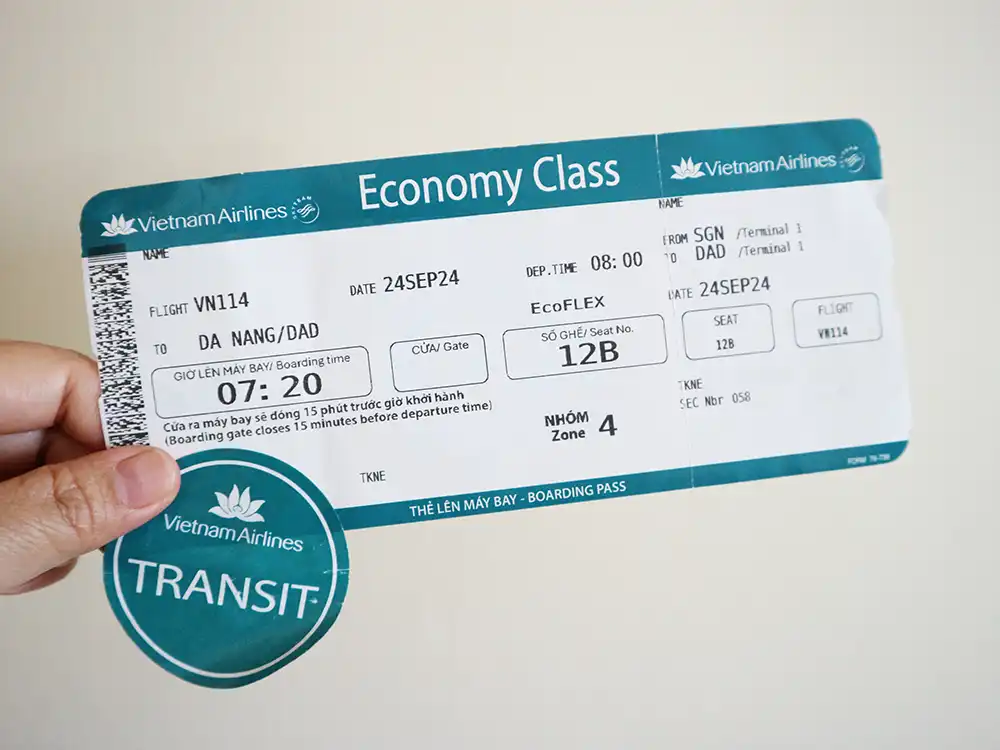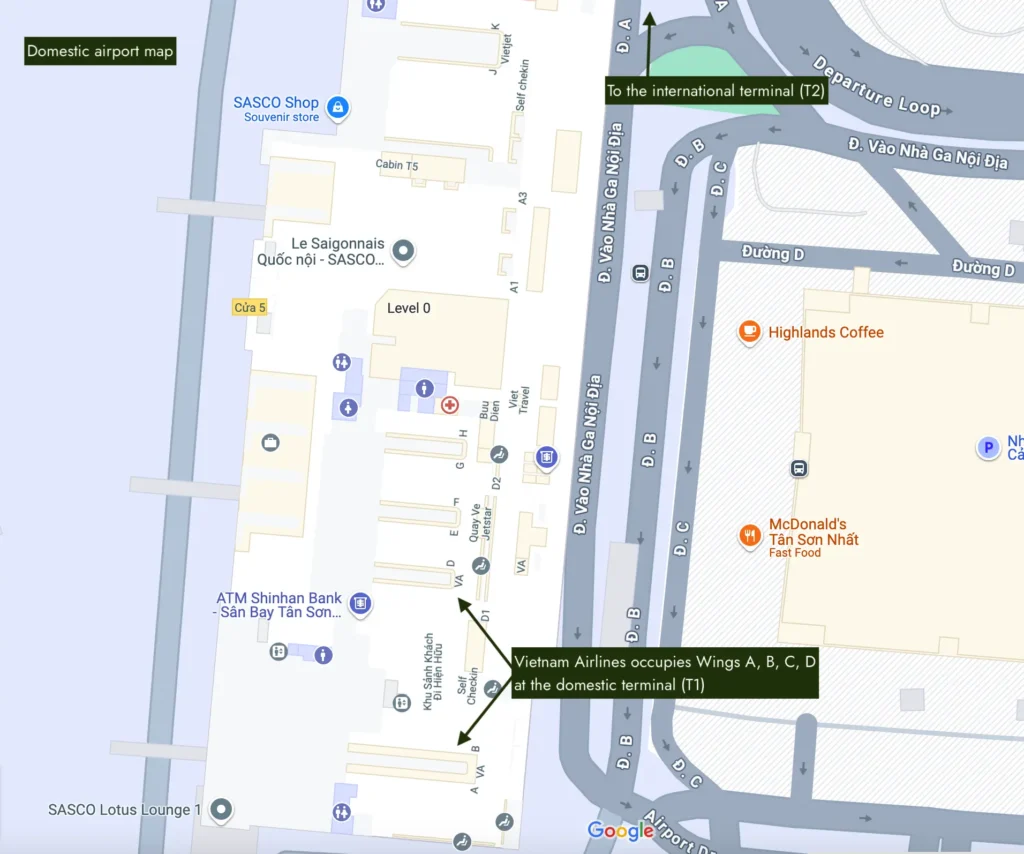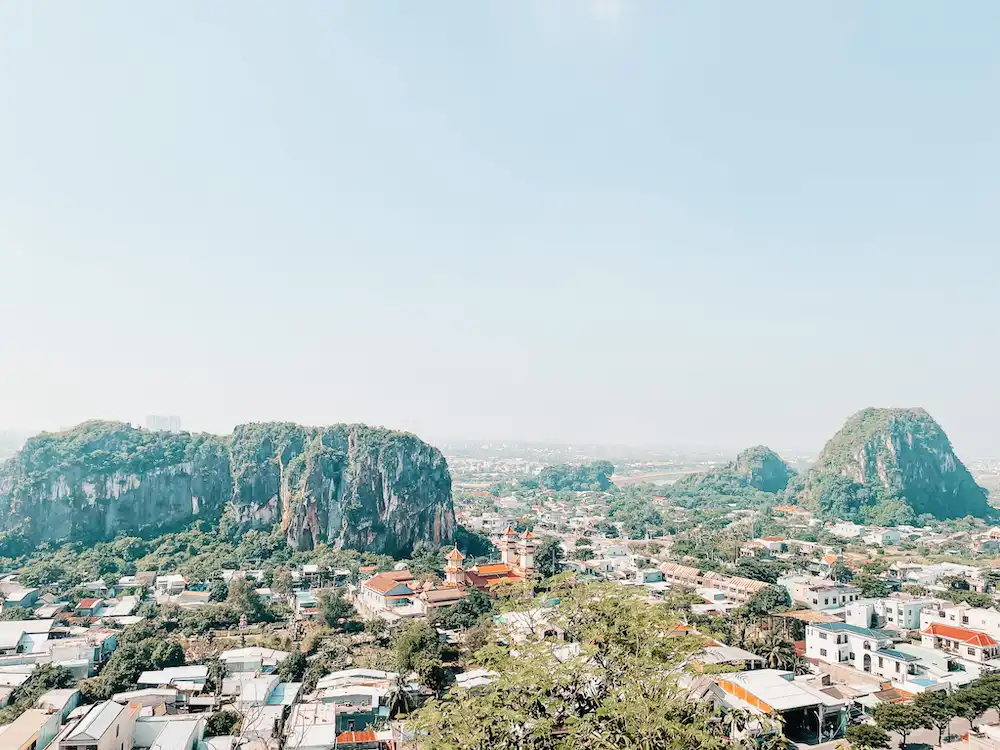I thought I’d share my recent experience flying internationally to Da Nang with Vietnam Airlines, since I wasn’t able to find much information on it prior to travelling. In particular, transiting at Tan Son Nhat International Airport (SGN) in Ho Chi Minh City (HCMC). While I can’t guarantee this process is the same for other airlines, I’d assume it’s pretty similar.
Before the trip, I did some research to get an idea of the transfer process but didn’t find much. Luckily, a few fellow travellers shared their advice on the TripAdvisor forums. Still, nothing really prepares you for the experience once you’re there.
Organise your Vietnam visa
Something I can’t stress enough is to get your visa sorted before you go to Vietnam. Sure, Visa On Arrival is an option, but it’s a hassle you don’t want—especially if your transit time at SGN airport is tight.
Also, when you Google for the eVisa, double-check that you’re on the official site because there are loads of lookalike third-party sites that overcharge for the visa. For my fellow Aussies, I suggest using the Smart Traveller website for the correct links and information.
Oh, and print out a hard copy of your visa—it’s a lifesaver if your phone decides to play up at immigration.
Time required for the visa application
I applied online for an eVisa, and yikes—it took a while. My application got rejected twice for things like the wrong photo size and wrong format of the hotel address. Since each round of processing takes 3–4 working days, the whole thing ended up taking almost 2 weeks.
Booking tickets with Vietnam Airlines
We booked return tickets from Perth, Australia, to Da Nang, Vietnam, directly through Vietnam Airlines for travel in September 2024. The flight to Vietnam was direct, but we had to transit at Tan Son Nhat International Airport (SGN) in HCMC for a domestic flight to Da Nang (DAD).
On paper, we had just under 2 hours for layover time, which seemed more than enough. We figured we’d have plenty of time to make it to the next flight, and since we already had our SGN to DAD boarding passes, we thought we’d be fine.
TIP: It’s easier with all connecting flights in one booking
If you purchase a direct airfare (i.e., one booking with connecting flights included), the process is much easier and faster than booking separate flights. You’ll likely receive all your boarding passes when you check in for your first flight, which is a huge help when transiting at SGN airport.
The transit process at Tan Son Nhat International Airport (SGN)
As previously mentioned, we had about 2 hours to transit. Well, in the end we used up that whole timeframe with no time to spare and it was quite a stressful ordeal. This was the process we had to go through going from Perth (Australia) – Ho Chi Minh City (Vietnam) – Da Nang (Vietnam) flying Vietnam Airlines.
For more information, the airport guide and airport map on the Vietnam Airlines website is quite handy.

1. When you land in Ho Chi Minh City (SGN), head to immigration
As soon as you land, head straight to immigration and baggage claim. If you’re flying into HCMC first before transiting elsewhere in Vietnam, this is your main point of entry—so immigration happens here. The good news? You won’t have to do immigration again at your destination.
Before you join the queue, keep an eye out for Vietnam Airlines reps handing out ‘Transit’ stickers. You’ll need one if you’re catching another flight. Once you clear immigration, you’ll need to head to the domestic terminal for your connecting flight.
Time required for immigration
Immigration took much longer than we expected. It took us just over an hour from when the plane landed to clearing immigration. Most of this was waiting in line (we arrived in the morning at 6.20 a.m.). We landed alongside multiple flights, and of course, only half the counters were open. I still remember being in line when our boarding time for the connecting flight rolled around. When they finally opened more counters, we and the other transit passengers literally ran to them!

2. Collect your check-in bags from the baggage carousel
Once you’re through immigration, it’s time to grab your bags. Since you’re transitioning from an international flight to a domestic one, you’ll need to re-check them. Thankfully, the baggage claim area is just down the escalators from immigration. There were three of us travelling, and I was first in line. As soon as I cleared immigration, I rushed downstairs to grab all our bags to save time. We had nothing to declare, so got through customs pretty quickly.
From here, it’s about a 5-minute walk to the domestic terminal. A bit longer if you’re flying Vietnam Airlines (see point 4 below). Head to the right of the baggage claim area, and you’re on your way.
Time required for baggage collection
We got ‘lucky.’ The silver lining of immigration taking forever was that by the time we got to the carousel, all the bags were already out—no waiting required. If that’s not the case for you, I suspect you’d be looking at the standard 10–20 minute wait at the carousel.
3. Drop off your bags to the Vietnam Airlines staff
As you make your way to the domestic terminal (but before leaving the international terminal) you’ll spot Vietnam Airlines staff collecting transit baggage. This is where the ‘Transit’ sticker comes in handy—it identifies you as a transit passenger. Hand over your check-in bags to them, and then continue on to the domestic terminal. The staff will also point out which way to go to get there.
If you have a single booking, your baggage tag should already have your destination airport (ours was DAD). You’ll also have your domestic boarding pass from when you first checked in, so you don’t have to check-in again and can go straight to the security checkpoint.
If you booked the domestic flight separately, you’ll likely need to check-in again at the counters and re-check your bags when you get your boarding pass.
Time required for dropping off bags
Since we already had our boarding passes, this didn’t take long at all—approximately 5 minutes. The time required will really depend on how many passengers there are waiting to do the same thing.
4. Find the right security checkpoint for your airline
In our rush to catch the flight, we bolted for the first door we saw at the domestic terminal. Turns out, each airline has its own security checkpoint. We ended up in the VietJet Air security line, and after a bit of confusion, they directed us further down to the Vietnam Airlines checkpoint. This mistake added another 10 minutes to our already tight timeline.
Time required for walking to the domestic terminal and finding the security checkpoint
The walk between terminals takes about 10-15 minutes. For Vietnam Airlines, it’s technically at the start of Terminal 1, so for us coming from Terminal 2, it’s the furthest counters.

5. Go through security and find your gate
Because we were so behind in boarding, there were Vietnam Airlines staff stationed at the security checkpoint holding signs for departing flights. They guided us straight to our gate, so there was zero chance of getting lost.
Time required for going through security
This was quick. The only time-consuming thing was that most passengers (including myself) had to remove shoes to be scanned (which isn’t something I usually have to do at other airports). Thankfully, there was only a small line, and the whole process took about 10 minutes maximum.
We made the connecting flight! (Just!)
When we finally boarded with minutes to spare before the departure time, I noticed half the passengers still hadn’t arrived. The cabin crew were very friendly and calm—smiling and reassuring everyone that it was okay. Turns out, a lot of people had also been delayed at immigration, so we definitely weren’t the last to board.
The plane departed about 20 minutes later than scheduled but still arrived on time. I have a feeling this must be a regular thing, judging by how chill and collected the cabin crew were as flustered passengers piled in.

The return trip
The return trip was much smoother. Flying from Da Nang International Airport (DAD) to Tan Son Nhat International Airport (SGN) meant our baggage was checked through to our connecting flight, as both were international terminals.
It was so chill that we even had time to sit down for lunch and do a bit of airport shopping on the way back!
Final thoughts
Overall, while the transit was stressful at the time, the process was fairly straightforward. The real pressure came from the tight layover timing. If we’d had a longer layover, it wouldn’t have been as stressful. After this experience, I’d say a three-hour layover would be ideal.
I have to give credit to the Vietnam Airlines staff though—they were incredibly helpful throughout!
If you’re about to start your Vietnam holiday—good luck, have fun and I hope this helps!



